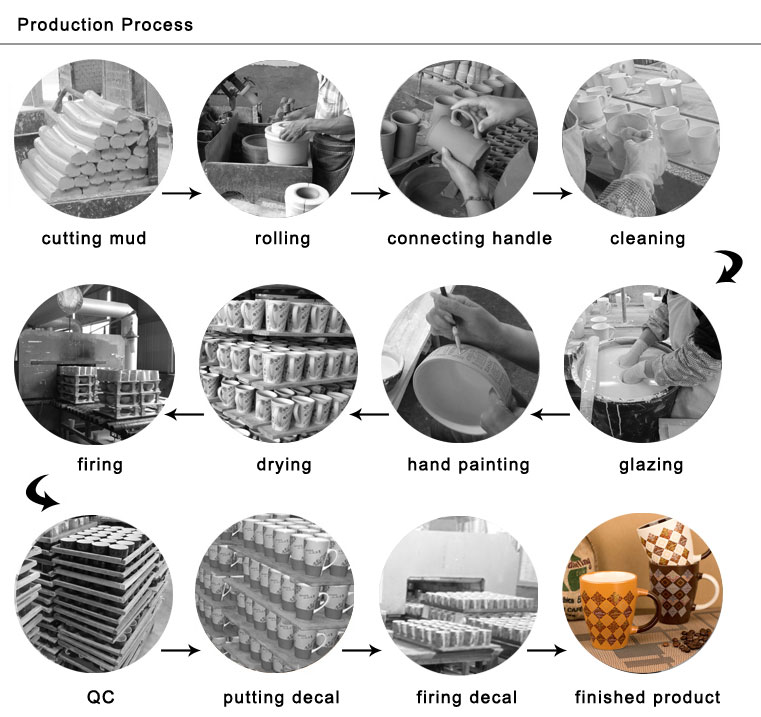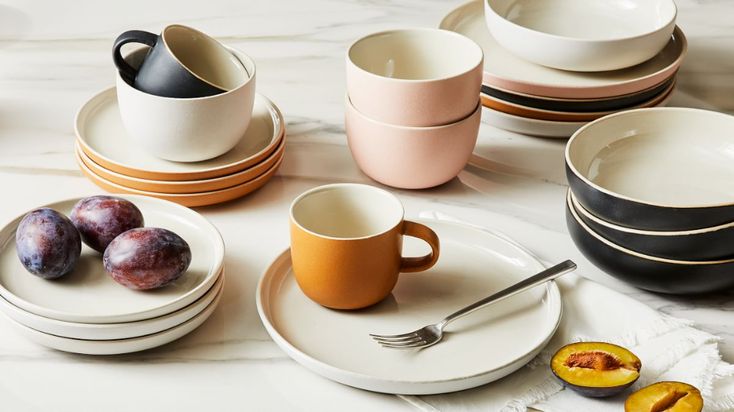
Ceramic dinnerware is very common in our daily life because they are easy to clean, will not be damaged after soaking, and will not be stained, so they are deeply loved by people. Ceramic dinnerware, with its elegant appearance and good durability, has always been a favorite on the dining table. At the same time, in the fast-paced modern life, microwave ovens have become one of the indispensable appliances in countless family kitchens. While enjoying the convenience brought by microwave ovens, a question that is often mentioned is: How safe is ceramic dinnerware in microwave ovens?
Exploring the safety of ceramic dinnerware in microwave ovens is not only related to the convenience and safety of daily life, but also touches on multiple levels such as material science, food safety, and consumer education. Correctly understanding and applying this knowledge can help us avoid potential dangers. In this blog, سيراميك جينهوا will show you the answer.
Ceramic Material Overview
Ceramics is considered the top material in the tableware field. The best ceramics are known for their elasticity, strength, transparency, and permeability. It may look fragile and easily broken, but it is actually solid. Since this material, kaolin is made by heating clay at high temperatures, usually above 2,372 degrees Fahrenheit, it makes the tableware as strong and durable as glass, ensuring the durability of its ceramic dinnerware.
Ceramics, as a man-made material with a long history, its diversity and aesthetic value occupy a pivotal position in human civilization. Before discussing the safety of ceramic dinnerware in microwave ovens, it is necessary to first have a clear understanding of its basic definition and the principle of its interaction with microwaves.
Definition of Ceramics
Ceramics are a type of solid material made of inorganic non-metallic materials that are shaped and fired at high temperatures. They usually have high hardness, high-temperature resistance, corrosion resistance, and other characteristics. The main component of ceramics is kaolin, which is native to China and the Limoges region of France. It is fired at high temperatures and has a fine texture, high transparency, and crisp sound. Ceramic is generally considered to be of high quality and is suitable for many purposes, including tableware.
Ceramic Dinnerware Manufacturing Process
The manufacturing process of ceramic dinnerware generally includes the steps of raw material selection, crushing, mixing, shaping, drying, glazing, and firing. Different types of ceramic dinnerware have significant differences in raw material selection, firing temperature, and glaze use. These differences directly determine their physical and chemical properties, including density, hardness, temperature resistance, and microwave penetration.

The Interaction Between Ceramic Dinnerware and Microwaves
As for whether ceramics can be used safely in microwave ovens, we need to first understand the working principle of microwave ovens and the microwave interaction characteristics of ceramics, which is crucial to evaluating their safety in microwave ovens.
Basic Concept of Microwave
Microwave refers to an electromagnetic wave with a frequency between 300 MHz and 300 GHz. Electromagnetic waves in this frequency band have special penetrating power and can penetrate many non-metallic materials, but will be absorbed by water-containing substances. Microwave ovens use this to heat food.
How Microwaves Heat Food?
The magnetron in the microwave oven generates microwaves, which form a uniform electromagnetic field in the oven cavity. The water molecules in food are polar molecules, and their positive and negative charge centers do not overlap. Under the action of the microwave field, the water molecules will rotate rapidly and collide with each other, and the kinetic energy generated will be converted into heat energy, thereby heating the food. This process starts from the inside of the food and spreads outward, achieving fast and efficient heating.
Absorption and Reflection of Microwaves By Various Materials
Non-polar materials such as ceramics, glass, and plastics can usually pass through microwaves without being heated, while polar substances containing water absorb microwave energy and heat. Metal materials reflect microwaves, so they cannot be placed in microwave ovens. Containers of different materials have different absorption and penetration capabilities for microwaves, which affects the heating efficiency and safety of food.

Safety Analysis of Ceramic Dinnerware In Microwave Ovens
Safe ceramic dinnerware suitable for microwave ovens should meet the following conditions:
- No metal decoration or edges: Metal will reflect microwaves, which may cause sparks or damage the microwave oven, so ceramic dinnerware without metal decoration is safer.
- Uniform material distribution: Uniform material helps microwaves penetrate evenly and avoid local overheating.
- No harmful pigments: Some pigments may decompose or release harmful substances under microwave radiation.
How to Determine Whether Ceramic Dinnerware is Microwave Safe?
- Check the product label or instructions: Manufacturers usually mark whether the product is suitable for microwave use.
- Perform a simple test method introduction: Put a ceramic bowl and a small amount of water in the microwave oven and heat it for one minute. If the bowl is only warm but not hot, it means that it has not absorbed a lot of microwave energy, which means that this ceramic bowl is relatively safe. On the contrary, if the ceramic bowl is very hot, it should be avoided in the microwave oven. This test should be carried out carefully and make sure to follow the safe operating procedures to avoid burns or other accidents.

Comparison of Ceramics with Other Materials
Comparison of ceramics with common microwave ovens such as glass and plastic:
- Glass: Heat-resistant glass (such as borosilicate glass) is a very safe option in microwave ovens. It neither absorbs microwaves nor releases harmful substances. It has high transparency and is easy to observe the state of food. However, compared with ceramics, glass may be more likely to break due to sudden temperature changes.
- Plastics: Not all plastics are suitable for use in microwave ovens. You need to look for plastic containers with “microwave safe” or related symbols on the bottom. These plastics are resistant to high temperatures and are not easy to deform, but they may release trace chemicals under long-term use or high temperatures, so you need to choose them with caution.
Summary of The Advantages and Disadvantages of Each Material
- Ceramics: Beautiful and durable, but you need to pay attention to the safety issues that may be caused by metal decorations and uneven materials.
- Glass: Safe and transparent, easy to observe, but sensitive to temperature changes and may break.
- Plastics: Light and convenient, but you need to pay attention to its microwave safety level to avoid chemical release.
الخاتمة
The development of ceramic tableware has gone through a long process, and a wide variety of colorful porcelain tableware can meet people’s various needs. Ceramics are generally safe as microwave oven utensils, especially when they meet the standards of no metal decoration and uniform material distribution. The key is to choose and use them correctly, and avoid designs and materials that may affect microwave penetration or create safety hazards.
With the advancement of materials science, new ceramics and other microwave-friendly materials are constantly emerging, which may provide more advantages in terms of safety, durability and environmental protection. Therefore, it is equally important for consumers and manufacturers to keep an eye on new developments in the ceramic industry and understand the latest safety standards and recommendations. Manufacturers need to know this information to ensure that they can always make the safest and most suitable ceramic tableware products.
سيراميك جينهوا is committed to producing the most consumer-friendly ceramic tableware, always paying attention to industry trends and the latest technologies, and providing our partners with the most competitive and price-competitive wholesale ceramic tableware. انقر هنا to view our أدوات مائدة سيراميك بالجملة series. We believe that in the future, ceramic dinnerware will be more efficient and more convenient for daily use. Welcome to contact us for more information!


